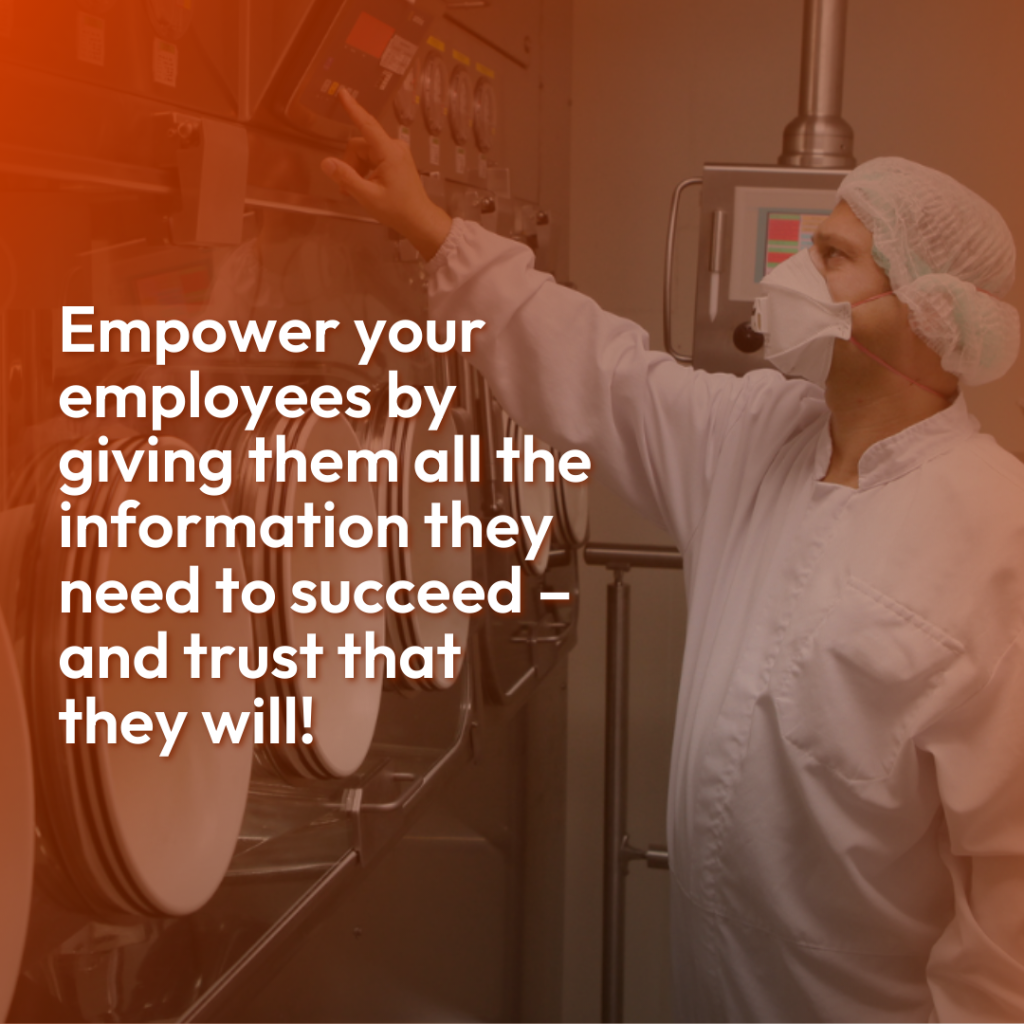Are We Afraid to
Empower Our Employees?
The team at Saint Clair Systems recently visited a well-known, highly regarded company that supplies automotive components. (The name of the company - or even the component they make - isn’t relevant to this story. What we saw there likely happens every day in the workplace in some way or another.)
What We’ve Noticed
This company wanted to integrate inline viscometers into their process, so we were there to evaluate their paint process. The process they’d been relying on up to that point was simple: their operator took a cup specifically designed for the thickness (viscosity) of their paint and dipped it into the tank where the paint was drawn from.
The operator used a stopwatch to time how long it took for the paint to drain through the cup. The number of seconds it took helped him determine if the paint was too thick or too thin.
He had been told that if the paint drained too quickly or slowly outside of the normal range, an adjustment to the paint was needed. (In cases like this, that typically means adding a solvent to the paint to make it thinner.)

The Challenge of Viscosity Measurement
In the world of process fluids, a commonly accepted unit of measurement for viscosity is something called centipoise. This useful piece of information helps us recommend a sensor with the proper range of centipoise to measure paints.
So I asked the operator what the paints’ centipoise was. With a puzzled look on his face, he replied, “What’s a centipoise?”
This wasn’t the first time I’d asked that question and been answered with a confused look. In my experience, many operators don’t know that the viscosity of paints has an actual unit of measurement. My guess is that this particular operator had been given a simple instruction: “Take a measurement. If the measurement falls outside a certain range, proceed to the next indicated step.” And that’s it.
It’s possible he was trained by someone that was given the same limited instructions he was. It could also have been someone who only did the bare minimum, didn’t want to overwhelm him, or assumed he wouldn’t understand more.
It made me think back to other places that I have worked, where if I asked about something outside my lane, I was told, “You don’t need to know that” or “That’s not for you to worry about.”
We’re Not Giving Operators Enough Credit
I agree that there is a time and a place for instruction - especially for a new employee. We don’t want to bombard them with new information before they have some experience with the task or process they’ve been hired for.
To a point, this makes sense. But in the broader scheme of things, communicating and teaching openly tends to benefit not just the new employee, but also their team and the operation as a whole.
But how is potentially overwhelming a new hire with complex information beneficial?
First, we won’t know the full potential of an employee if we don’t challenge them. We might (and often do) find out that what we hired them for isn’t all that they are capable of.
Second, with labor hard to come by and the push for automation to make an impact on more processes, it only makes sense to look at the workforce that we have and consider if we are underutilizing them or underestimating them. By only showing them a narrow, literal view of their role, rather than educating them on how their tasks impact the broader operational scope, we rob our workers of important context and the opportunity to learn a better way of doing things.

It’s Time to Let Go of Old Patterns
So why do we fall into these patterns in the first place? Sometimes, it’s just because “this is the way it’s always been.” Other times, it’s simply because the knowledge didn’t get passed along. When that happens, the trainer can’t answer many of the “why?” questions because they either weren’t told or never asked.
It’s normal to feel threatened by a newer employee or worry that they could make us look bad. But new talent is a good thing. We should make a concerted effort to be more open-minded about the value these assets bring to the table.
The reality is, we have a younger generation of workers coming in. This generation is accustomed to asking questions and expects to have them answered. They won’t accept responses like, “That’s not for you to know.”
Rather than bristling at this change in attitude, embrace the curious minds and adventurous spirits in today’s workforce. These are future lead engineers, department heads, project managers, district managers, and CEOs.
Before they climb the ladder, take time to recognize their potential and take advantage of the opportunity to stimulate the growth of your own department or company from the bottom up.

